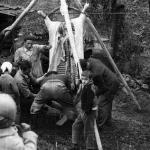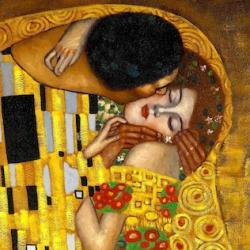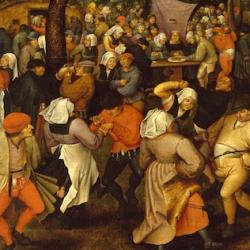Aristotle taught that women are defective men, with rational and moral capacities inferior to men. This is evident in generation, where the man provides the form, the fertilized seed, while the woman plays a passive role.
It’s sometimes argued that Aristotle’s philosophy of femininity simply reflects his age, with its limited knowledge of the biology of reproduction. Sister Prudence Allen (The Concept of Woman, vol. 2) doesn’t allow Aristotle that out:
“more than one philosopher prior to Aristotle offered the intuitive hypothesis of a double-seed theory. Empedocles suggested that the mother and father both provided half of the necessary seed for conception, while Parmenides suggested that each parent provided a single seed that battled for dominance in the conception” (96). Aristotle rejected “these intuitions of a double-seed theory in favour of his own single-seed theory” (96).
Allen argues that this rejection is a product of Aristotle’s basic metaphysical commitments. He was “drawn to the analogy between form, which is found in many common things, and the way a single male can impregnate many females; while the matter receives the form the way a woman receives the seed of the male in conception.” Males don’t contribute matter to conception: “The extreme differentiation of male and female contribution to generation certainly had a parallel in his metaphysical distinction of form and matter” (96).
And not only that. Male/female was homologous with other hierarchical contraries in Aristotle’s thought. Gender differences arise as a metaphysical problem: “If form is the principle of differentiation between two species, human beings and horses, for example, and if matter is the principle of differentiation between two members of the same species, one man and another man, . . . then what metaphysical principle explains the differentiation between males and females within the same human species?” (94).
Aristotle concludes that “form cannot be the principle of distinction” because male and female aren’t different species. Instead, he finds the principle in “contrariety,” the relation of opposites. In such relations, one term of the relation is always prime and the other is privative; dark is the privative of the prime of light, cold the privation of hot (94).
And male/female maps onto these other contraries: “Aristotle thought that the extra heat in the human male gave him an ability to heat up or refine his blood until it became released as fertile seed capable of transmitting the immaterial human form. Thus the male was characterized by heat, an ability, and fertility. The female, being colder by nature, could not heat up and refine her blood to produce fertile seed containing form; instead her blood became the material for generation. Thus the female was characterized by coldness, an inability, and infertility” (96).
In Aristotle’s own words: “As the proximate and motive cause, which the belong the logos and the form, is better and more divine in its nature than matter, it is better also that the superior one should be separate from the inferior one. That is why whenever possible and so far as it is possible the male is separated from the female, since it is something better and more divine in that it is the principle of movement for generated things, while the female serves as their matter” (quoted 99).
In Aristotle’s theory of gender polarity, the woman is less perfect than the male, a “devaluation of the female” that pops up in various places in his writings:
“At the very least we find the male contribution to generation associated with the divine – activity, form, heat, strength, fertility, and ability – while the female contribution is associated with deformation, passivity, matter, cold, weakness, infertility, and inability.” And this devaluation goes beyond the issue of generation. Aristotle provides “philosophical foundations for a thorough and consistent gender polarity’ in which “a woman herself becomes thought of as a deformed or defective man” (100).












